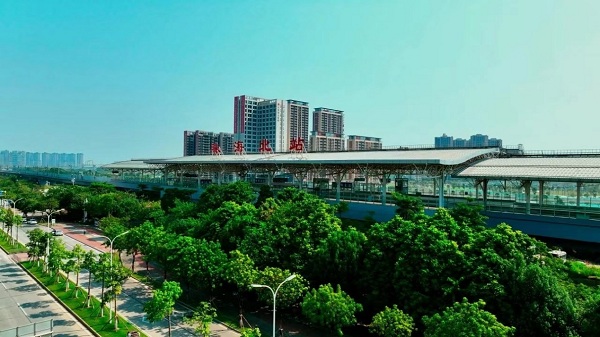New passage to allow for 30-minute travel between Tangjiawan, Shenzhen
The layout for the Zhuhai section of the Lingdingyang Passage was unveiled in the recently released bidding announcement on the Guangdong Public Resources Trading Platform, set to add one more traffic artery in the Pearl River Estuary.
Shenzhen has finished the plan design of the project's section in Qianhai, which will extend to Zhuhai via Zizhou Island.
The project will feature space for both vehicles and railways. Four interchanges will be set up in Zhuhai's Qi'ao, Beiwei, Xiazha, and Gangwan Avenues. Upon operation, passengers will be able to travel between Shenzhen's Qianhai and the Zhuhai National Hi-Tech Industrial Development Zone (Tangjiawan) within 30 minutes.
The whole project will be built at a cost of 40.8 billion yuan ($5.7 billion), and will feature bridges in the east and tunnels in the west. The Zhuhai section will run for 14.6 kilometers (9.1 miles) from Qi'ao to the Xiazha Interchange and then another 2.7 km (1.7 miles) from the Qi'ao Interchange to Gangwan Avenue.
As part of the project, the Shenzhen-Zhuhai High-speed Railway will stretch 80.7 km (50.1 miles) from Shenzhen's Xili Station to Zhuhai North Station and Zhuhai (Hezhou) Hub Station at a designated speed of 350 km/h (217 mph). Of note, the Zhuhai (Hezhou) Hub Station has also begun construction.

Zhuhai North Station in Beiwei Area [Photo courtesy WeChat account: zhtqb12345]
The Shenzhen-Zhuhai Intercity Railway, the other railway involved in the project, will run for 40 km (25 miles) from Qianhai in Shenzhen to Zhuhai's Houhuan area. Its designed speed limit will be set at 200 km/h (124 mph).
Guangdong Province has been devoting continuous efforts to the construction of a one-hour transportation circle in recent years. The circle connects major cities in the Guangdong-Hong Kong-Macao Greater Bay Area, and has planned for 11 vehicle and rail passages over the Pearl River Estuary.
The city cluster on the west bank of the Pearl River Estuary is forming an integrated development axis for both the east and west banks with the help of the Shenzhen-Zhongshan Link, Lingdingyang Passage, and Hong Kong-Zhuhai-Macao Bridge.



